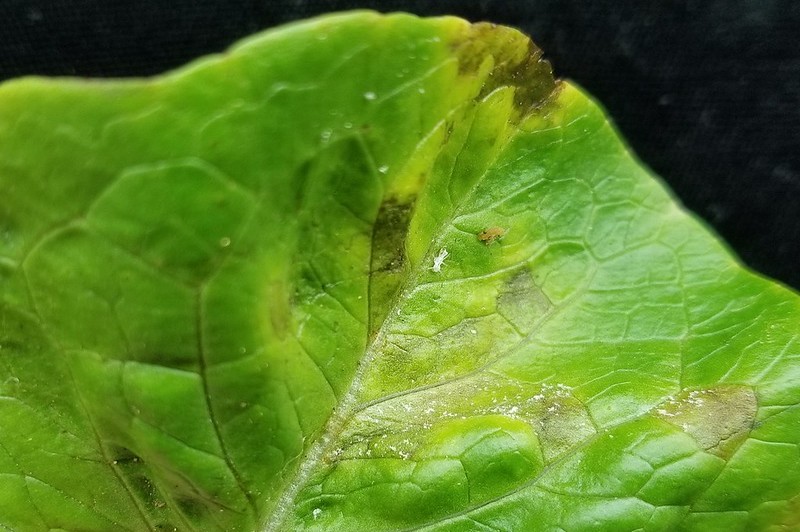If you want the general answer to what causes downy mildew, it’s moisture. However, if you wish to know the specific reason for downy mildew growth, read this article until the end!

What Is Mildew?
Mildew is a kind of fungi that is often misconstrued as the early mold stage. It’s mistaken as mold because of its color, ranging from white to light yellow.
On the other hand, mold appears in darker colors, like greenish-black, blue, or black. The latter is also more damaging to your household compared to mildew.
Mold is more destructive because it is indiscriminate on the surfaces it settles on, meaning it can grow on organic and inorganic surfaces, unlike mildew, which can only grow on organic or natural surfaces.
Moreover, mold breaks down the objects it rests on, leading to more devastating damage to your household structures. Both have a distinctly unpleasant odor that is used to identify their existence in your home; it’s also one of the causes of respiratory issues.
These two have sub-categories or sub-types. Molds, as you know, can be used in food.
Here is an article talking about how long does it take for cheese to mold to give you a glimpse of its use in the food industry. Mildew has different forms as well, they are powdery and downy mildew, and we’ll tackle them below.
Two Kinds Of Mildew: Powdery And Downy
As mentioned above, mildew tends to grow more on organic surfaces. Often, this means it devastates the plants in your household.
Generally, powdery and downy mildew is caused by certain conditions, which leads to their growth. One of these conditions is poor air circulation.
If you have overcrowded plant spaces, you risk having fungi spreading rapidly. What can help you in this situation would be an air purification system, or you can also choose to space your plants evenly.
Another general cause of these two forms of mildew is insufficient light. Plants need light, and without having enough, they weaken, making them vulnerable to fungi.
Over-fertilization can also lead to mildew growth because plants grow too quickly, attracting powdery mildew. This type of mildew loves targeting new plant growth, so you should avoid putting too much fertilizer on your plants.
Lastly, the most well-known cause of mildew growth is high humidity levels. Your plants need different humidity levels as they grow; they start off needing 70% as seedlings but would only require 40% as they mature.
If you keep the humidity levels high despite your plants maturing, then you may wake up to mildew forming on your plants.
Also, despite looking similar due to color, powdery and downy mildew, and having the exact general causes of growth, these two have differences.
Powdery
Powdery and downy mildew have distinct fungal pathogens that cause them. Moreover, you will find powdery mildew on the top of the leaves, but it can also be found on the bottom.
As for the appearance, mildew of this kind looks like sprinkled powder on plants. They don’t look threatening or alarming compared to mold, are often in clumps, and are slimy or fuzzy.
Another way of identifying powdery mildew on your plants is the curled and discolored leaves. Fungi are harmful to plants, so one sure-fire way of identifying them is to look for damage.
Downy
Downy mildew is considered another type of this fungus but is not caused by a fungus but by Plasmopara viticola, a water mold species. It is also part of the water mold family, despite being mildew.
Downy mildew is difficult to identify because it is usually located on the leaves’ undersides. You can detect them by inspecting the bottom of your leaves and looking for a grayish-white or white downy substance there.
You can check the discolored leaves to verify if the cause of your plant’s diminishing health is due to mildew. Other signs of mildew growth on plants are when your plants’ leaves droop or when you notice some brown spots or yellow patches on them.
Aside from leaves, downy mildew can also affect your plants’ branches and lead to plant death.
Another reason why downy mildew is challenging to identify is that the symptoms of its growth differ from one plant species to another. For some, it’s a dusty coating, while for others, it can be deformed growth.
Also, outdoor plants can spread fungi to your outdoor furniture. In this scenario, an article on how to prevent mildew on outdoor cushions may be of help.
Tips In Preventing Future Downy Mildew Growth
Preventing future downy mildew growth is simple. First, put enough space between your plants to encourage airflow and prevent the rapid spread of fungi from one plant to another.
Also, plant them in a place with abundant sunshine, so the moisture from the leaves or soil dries quickly, leaving no chance for mildew or mold growth. Also, water on the roots rather than on the leaves because mildew usually strikes on the leaves.
Lastly, regularly maintain your plants. Do this by removing weeds and organic debris on the plant beds.
Conclusion
What causes downy mildew is different from what causes powdery mildew. One is caused by water mold, and fungi cause the other.
Despite their differences, these two are both harmful to plants and should be attended to immediately.
